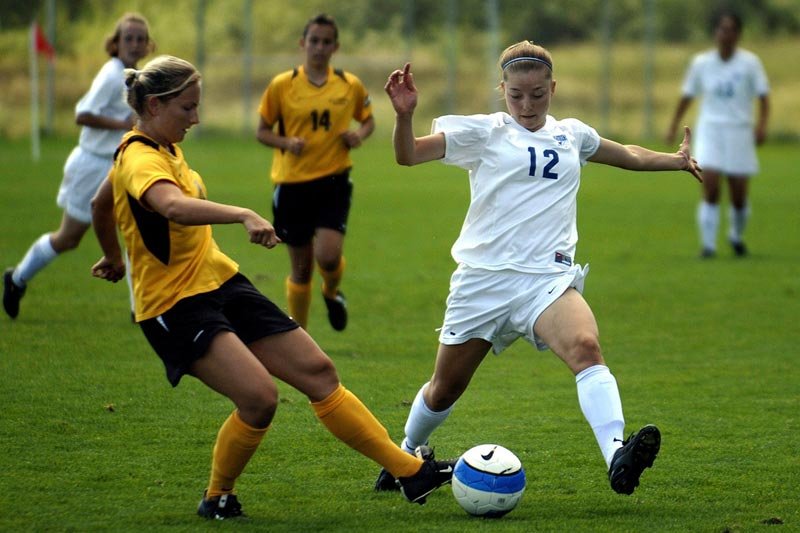Needs And Emotions In Women’s Sports : The role of women in sports has always been ambiguous and embossed. Many sports are traditionally considered masculine. For example, football, which is one of the most popular sports, is referred to masculine sports, while women’s leagues are less accessible and recognized.
In this regard, women in sports have many restrictions associated with stereotypes and sexism. Gradual achievement of equality of men and women in sports is the result of feminism. Some studies show that the psychological state plays a crucial role in women in sports, including intelligence, adaptability, and competitiveness.
Gender discrimination in sport has existed for many centuries. For example, women were forbidden to participate in the Olympic Games or even be in the stands of the stadium in ancient Greece. Even in the first Olympic Games of modern times, in 1896, the founder of the event Pierre de Coubertin argued that women are not able to withstand the load of the competition and should not participate in them (“100 Women: Do The Olympics Have A Gender Gap?”).
In the modern world, the number of women’s and men’s Olympic sports is roughly the same, which means a gradual transition to equality in sports. Nevertheless, the society still discriminates and shows sexism towards women in sports.

Women’s sports competitions always have a social aspect of the struggle. Participants not only compete for prizes but also struggle with public opinion and sexism. Consequently, an essential part of women’s sport is psychology and personal perseverance, not only to maintain the spirit but also to gain recognition in society.
Apparently, the competition is an activity where personal qualities play a crucial role in the athlete’s success. Studies were conducted in which psychological gender of women in sports were studied. The results showed that the subjects had an androgynous nature and had stronger morale than women outside sports (Rutkowska, and Bergier). It was also pointed out that women in sports are highly adaptive.
In addition, the level of emotional intelligence of women in sports was weaker than the rest. The reasons for this result were not indicated, but a constant struggle against sexism plays an essential role in the psychological development of sports morality. It is necessary to agree that men’s and women’s football are different.
Apparently, the physical capabilities of men and women are generally different, which means different levels of technology and endurance. Gender stereotypes that demoralize women in sports have a significant impact on the analysis of women’s football.
A significant problem for women in sports is also the limitations and lack of the right to a free appearance. The objectification of women is observed in modern sports as part of any competition. For example, the regular appearance of women in tennis is in short dresses or shorts and T-shirts. Undoubtedly, such outfits are comfortable with active actions, which are indispensable in many sports.

Nevertheless, an undeniable fact is the interest of society as part of sexism and the emergence of women in sports as an object for visual pleasure. The problem is much more profound, as more attention is paid not to the professional skills of the athlete, but to the appearance or personal life.
For example, an American athlete and a bobsledder, Lolo Jones, were accused of focusing on marketing and developing a career as a product that is sold to society (Longman). On the one hand, such accusations are a manifestation of sexism towards women who have activities outside of sports.
On the other side, it is evident that financing of women’s sports is much less. Consequently, outside sports activities, including advertising campaigns, are primarily created to attract additional investment for the development of a sports career. Thus, the objectivization of women in sports is the result of discrimination and support for the opinion that men dominate in this field of activity.
Combating gender stereotypes is the basis of women’s psychology in sports. It is no secret that girls are most often forced to practice traditional women’s sports, such as rhythmic gymnastics or figure skating.
Thus, a stereotype is created that women will not be able to achieve success in football, hockey or boxing, in which men dominate. Even though officially women can take part in professional competitions along with men, gender discrimination is observed in sponsorship and honorariums (Shin). Proceeding from this, the public opinion about women in sports is formed under the influence of stereotypes that have been laid down for years and are actively being destroyed in the modern world.
Gender stereotypes play an essential role in the public acceptance of women in sports. Studies show that the psychological gender of athletes has signs of androgyny combined with a high level of adaptability. It means that women need the support of society and the recognition of professional skills. Discrimination also lies in the different levels of funding and sponsorship of athletes and athletes, which affects the success of career development. Thus, support for stereotypes about the dominance of men in sports negatively affects the sports morals of women and affects professional success.
For any help with psychology writing visit this psychology essay writing service which writers had worked on this article.
Needs And Emotions In Women’s Sports
types of emotions in sports, role of emotions in sports, how emotions influence performance in competitive sports, controlling emotions in sports, anger and sports performance, emotional sport, athletes sometimes show emotion due to which of the following? quizlet, sports anger management techniques, Needs And Emotions In Women’s Sports




